Son Of A Son
Peter Lehmann
The Pastor's Son Shiraz 2015

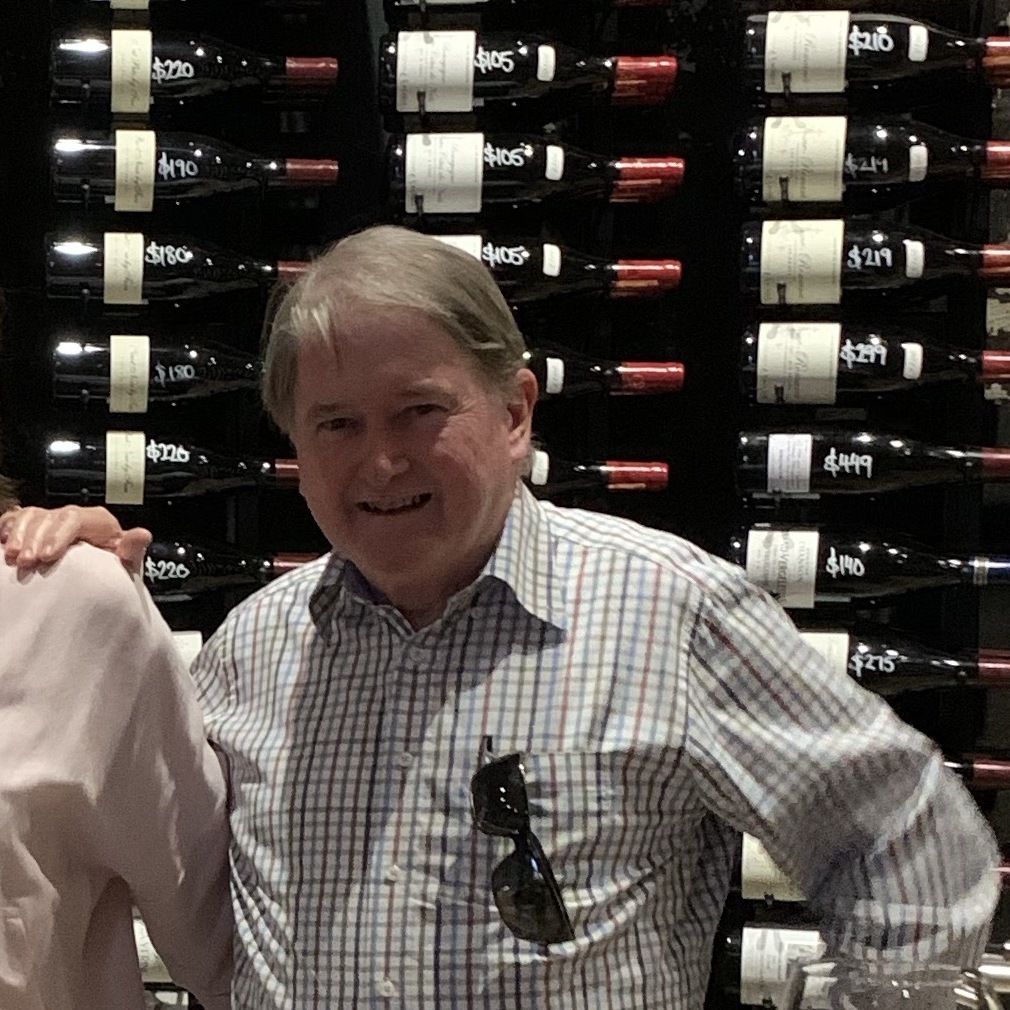
Lisanne van Son & Benjamin Serer
Hasta la Vizsla Pétillant Naturel White Blend
Delicious Pet Nat. A little citrusy and funky — 7 years ago
Kuleto Estate
Native Son Lake County Napa County Red Blend 2014
Dry, bold chocolate and cherry finish. Read the label for what at first seems pretentious but actually a humorous write up on this very nice wine that would be nice to keep in stock. — 8 years ago
The Mascot
Napa Valley Cabernet Sauvignon 2011

Fortunate Son
Naughty Wicked Witch of the West Vineyard Red Blend 2012
A five hour decant. Dark cherry and blueberries with a rub of minerals and tobacco. Just awesome — 9 years ago
R.L. Buller & Son
Premium Fine Tokay
NV. Brown sugar, toasted pecans, maple, poached pear, quince paste, the green notes of over-steeped green tea and honeydew that I typically associate with Australian Tokay, raisins, decayed white flowers, overripe fruit. The acid and the green notes save this wine from being overly tooth-aching. Awesome match for pecan pie or crème brûlée. — 9 years ago
Robert Biale Vineyards
Like Father Like Son Napa Valley Syrah Blend 2012
Dark, deep purple in the glass. Fragrant and powerful on the nose. Scents and flavors are very complex. Cigar, blackberry and hint of Brazil Du Banana. Nice wine! — 10 years ago
Smith & Son Wine Co.
Santa Barbara County Pinot Noir 2011
Tastes of cherry, pomegranate and with spice tones. Enjoyed this with pernil and potatoes, onions and carrots. Very good accompaniment. — 10 years ago
Charly Thevenet
Grain & Granit Régnié Gamay 2013
Gang of Four son. Started his own thing at 22. He knows how to treat Gamay. Looking forward to growing old with these. — 10 years ago
Kuleto Estate
Native Son Napa Valley Red Blend 2011
Wonderful dark layers of fruit — 10 years ago
Equis
Equinoxe Crozes-Hermitage Syrah 2012
'12 Equinoxe - Crozes-Hermitage. Pretty good stuff from Maxime Graillot (Alain's son). A fruit forward style, but some lift helps. Acidity's a bit green, but that's no big issue. — 11 years ago
Château Haut-Brion
Pessac-Léognan Red Bordeaux Blend 1945
Château Haut Brion 1945 en magnum... Une pure merveille... Signe d'une grande jeunesse, peut être éternel, ce superbe vin s'exprime dans son toucher sensuel et délicat a la manière d'une caresse d'un tissu de soie... Long, gourmand et plein de peps, il se délecte sans fin... — 12 years ago
Y Rousseau
Son of a Butcher Tannat Blend
Tims wine. Very smooth and rich. Great wine. — 6 years ago
Didier Dagueneau
Buisson Renard Pouilly- Fumé Sauvignon Blanc 2015
2015 ‘Buisson Renard’ by Didier Dagueneau, is a spectacular effort. Now headed by Didier’s son, Louis-Benjamin, Dagueneau wines continue to set the standard for the Pouilly-Fume region. The wine shows wonderful flinty and damp earth tones with lemon oil drenched sourdough bread on this marvelous bouquet. The rich, almost unctuous texture to this wine, truly satisfies. Lemon zest, beeswax, ripe pear and starfruit flavors with wet stone and smoky mineral undertones all nicely amalgamate on the palate. Intense and showing beautifully in its youth, this dazzling Sauvignon Blanc will have an exceedingly long life in the cellar. Drink 2019-2033- 94 — 6 years ago
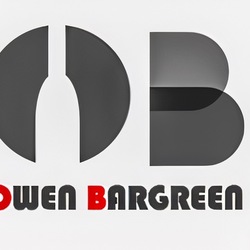
Shafer Vineyards
One Point Five Stags Leap District Cabernet Sauvignon 2015
The small winery is managed by father/son team John & Doug Shafer. A blend of 90% Cab Sauv, 7% Merlot & 3% Malbec, aged, 20 months, 100% new French oak. Beautiful fruit & floral aromas with hints of savory spice. On the palate cherry & raspberry flavors with a tight oak structure adding pepper, licorice & dusty cacao. Firm tight tannins, needs decanting now, lingering ending with fruit & slight mineral edge. Good now but 5 years of cellar rest with make wine pop! Had this with a Holiday Filet Mignon. Nice! — 7 years ago
Château Latour
Premier Grand Cru Classé Pauillac Red Bordeaux Blend 1940
What a beautiful person inside and out! I'm blessed beyond measure to be able to call him "Dad". Words can't adequately express how much I Love him. We opened a few bottles last night that I will hold near and dear to my heart forever. We are celebrating his completion of 6 rounds of chemo therapy in his battle against Prostate cancer. This is his 3rd time in the ring against this opponent and it appears that he's won with a unanimous decision by knockout at this time!!!!!! Love you dad!!!!! So proud of your strength through this process. My Father was born in 1940. A difficult year to say the least:
Germans entered Bordeaux in June of 1940. As dictated by Hitler himself, it was the sworn duty of each and every commander to search and seize whatever could be used for the advancement of the German cause. Bedlam broke out. Chateaux' were ransacked, wine cellars were looted if not used for target practice. The Chateauxs were forced to continue producing wines. It's poetic justice that Mother Nature provided the Germans with the worst growing season from 1940 to 1944!!!! The Germans left Bordeaux in 1944 to the cheers of the residents "Au Revoir Les Allemands"!!!! The 1940 bottle that we enjoyed this evening survived World War II. It Survived the ransacking, pillaging & plunder of countless German soldiers. It's outer capsule showed evident signs of its struggle but it's inner beauty was unblemished and glorious. I've had many, many vintages of Latour from 1928 and on but none have ever tasted as perfect as the one we enjoyed tonight. This 1940 was perfect. It was a fighter, it never gave up, it never relinquished in the face of adversity. That's my Father, that my role model. He's a beautiful person inside & out. I think 1940 is the best vintage that I have ever had the privilege to enjoy. Special thanks to my good friends Michael Troise whom provided me with much of the insights in regards to the incredibly difficult vintage and David Page whom gifted this bottle to me for our celebration this evening. I will never forget your generosity. It was a glorious evening to say the least!!! Wine has a way of bringing people together and encapsulating an evening and event. I couldn't think of a better way to rejoice in his victory than to open a Father & Son birth year wine. — 9 years ago
Schramsberg Vineyards
Napa Valley Brut Blanc de Blancs 2012
Jack and Jamie Davies revived the historic vineyards and cellars in 1965, with a mission to produce California's first world-class sparkling wines. Today, led by their son Hugh, continues with this commitment to quality. A 100% Chardonnay, straw yellow with aromas of stone and citrus fruits, with floral scents. A terrific sparkler shows crisp green apple, orange and grapefruit zest. A medium-bodied, wine with a great mousse, tiny bubbles and nice length on the finish ending with some crisp mineral notes. — 9 years ago
R.L. Buller & Son
Premium Fine Victoria Muscat
Dark amber color with lifted, complex, and appealing dried apricot, toffee, caramel, molasses, date, roast nut, and warm spice aromas. On the palate it's full-bodied, rich, and sweet, but not overly so thanks to good acidity, and a rancio character with toffee, brown sugar, date, bitter orange peel, and warm spice flavors, with a long sweet, but not cloying finish. 375ml 18% alcohol. Excellent QPR at $14 #klwinemerchants #aussiewine #aussiesticky #wine #muscat #enofylzwineblog — 10 years ago
Hubert Lamy
En Remilly Saint-Aubin 1er Cru Chardonnay 2009
From an A+ vineyard, on the St. Aubin side of the Montrachet hill. Next to the Chevalier Montrachet parcel, but with a different exposure (south-west instead of south-east). Energetic Burgundy from a rising star domaine (especially since son Olivier took over in 1995). — 10 years ago
Anima Negra
Son Negre Callet Blend 2004
This is the 2004 Ánima Negra Son Negre. It is a gorgeous wine with bramble and red fruit on the nose. Palate is absolutely balanced and set off with one of the best silky textures I've had in a long time. Spice, caramel and a bit of smoke too... Gorgeous and enchanting. — 11 years ago
R.L. Buller & Son
Victoria Tawny Port Blend
A good port for a snowy evening. — 12 years ago
Domaine des Baumard
Clos du Papillon Savennières Chenin Blanc 2015
In 1953, Jean Baumard acquired vineyard in Quarts de Chaume, in 1968, purchased substantial acreage in Savennieres. Today Jean’s son, Florent, manages the winery. Aromas of green fruits, floral and flinty notes. On the palate green apple, pear, melon and slight nutty flavors, well balanced with acidity. Medium+ length ending, no fluttering with fresh juicy mineral, just like the butterfly on the label! Will age well if you can resist opening. — 6 years ago
Quilceda Creek
Columbia Valley Cabernet Sauvignon 2005
Lovely fleshy notes on the palate with ultra silky yet persistent tannins. A little cold from the cellar. Beautiful texture - easy to love. I can see why Robert Parker gave this 100 points. Not overly Cabernet in a varietal sense but a rich, textured delicious wine still with a latent core giving at least another 5 years. Although I notice Harvey Steiman had a short drinking window through to only 2017. I bought this in the USA years ago when my son was at College - never seen it for sale in Australia. — 6 years ago
Gaec Henri Bonneau et Fils
Les Rouliers Vin de Table de France Grenache Blend
From the enigmatic Henri Bonneau who sadly passed away a few years ago. Winemaking now handled by his son. Medium to dark crimson. This is one of his lesser Cuvées after the legendary Celestines and then Marie Beurrier and is classified as NV. Stacks of Garrigue - the combo of Rosemary Thyme and loam - love CDP. Also a muted dusty raspberry note and after a few hours in the decanter a lovely floral perfume with liquorice notes. Silky and long. — 7 years ago
Château Brane-Cantenac
Grand Cru Classé en 1855 Margaux Red Bordeaux Blend 2005
I have a six-pack of this 05. I thought after 10 years in bottle, it would be interesting to check in on its evolution. While tasty, I’ll wait another 8-10 to open another. Even after 2-3 hours in the decanter, it’s still a very young adolescent. On the nose, slightly sour blackberries & dark cherries, dark currants, baked black plum, haunting blue fruits, anise, whiff of spice, steeped tea, dry stones, dry crushed rocks with dry top soil, caramel, vanilla with fresh & dry red florals. The body is thick & full. Tannins are starting to round out. It’s velvety on the palate. The fruits are; bright, fresh & ripe and really show the greatness of the 05 vintage. Dark currants, blackberries, dark cherries, baked black plum, haunting blue fruits, baked strawberries, cherries, raspberries on the long set, dark spice, clay & loamy dry top soil with crushed rocks, dry stones, cigar with ash, graphite, dry stems, slight herbaceous character, mint, used leather, clove, caramel, vanilla, fresh & dry red florals with violets. The round acidity is about perfect. The structure and length are still strong. The balance is in harmony. As for the long finish, it’s lush, ruby, rich and well polished. Photos of; Chateau Brane Cantenac, large wood vats, Henri Lurton and Estate vines. Producer notes and history...Chateau Brane Cantenac began in the early 17th century. At the time, the estate was known as Domaine Guilhem Hosten. Even that far back, wine was produced from the property. In fact, the wine was so highly regarded it was one of the more expensive wines in Bordeaux. It sold for almost as much money as Brane Mouton. This is interesting because of who went on to buy the vineyard in the 1800’s. The Baron of Brane, also known as “Napoleon of the Vineyards”, purchased the Chateau in 1833. At the time of the sale, the estate was called Chateau Gorce-Guy. To get the funds needed to purchase the Margaux vineyard, the Baron sold what is now called Mouton Rothschild, which was at the time of the sale, known as Chateau Brane-Mouton. Not such a good move with hundreds of years in hindsight! In 1838, the Baron renamed property taking his name and the name of the sector where the vineyards were located and called it Chateau Brane Cantenac. The Chateau later passed to the Roy family, who were well-known in the Margaux appellation in those days, as they owned Chateau d’issan. Moving ahead to 1920, the Societe des Grands Crus de France, a group of merchants and growers that owned several chateaux located in the Medoc including; Chateau Margaux, Chateau Giscours, and Chateau Lagrange in St. Julien, purchased Chateau Brane Cantenac. Five years later, M. Recapet and his son-in-law, François Lurton, took over Brane Cantenac along with Chateau Margaux. Lucien Lurton (the son of François Lurton) inherited Brane Cantenac in 1956. Today, the estate is still in the hands of the Lurton family. Brane Cantenac is owned and run by Henri Lurton. After being given the responsibility of managing Brane Cantenac, it was under the direction of Henri Lurton that large portions of the vineyard were replanted. Vine densities were increased, the drainage systems were improved and the plantings were also, slowly changed. The vineyard of Brane Cantenac is planted to 55% Cabernet Sauvignon, 40% Merlot, 4.5% Cabernet Franc and .5% Carmenere. Carmenere was used for the first time in the 2011 vintage. The only other Chateau I know that still uses Carmenere is Clerc Milon. The 75 hectare Left Bank vineyard of Brane Cantenac is essentially unchanged since it earned Second Growth status in the 1855 Classification. At least that is the case with the 45 hectares used to produce the Grand Vin of Brane Cantenac. Those 45 hectares are planted surrounding the Chateau. Those vines are located just in front of the Cantenac plateau and are the best terroir that Brane Cantenac owns. They have other parcels, which are further inland and much of those grapes are placed into their second wine, Le Baron de Brane. Those additional hectares can be divided into 3 main sections. Behind the Chateau, they have 15 hectares of vines on gravel and sand, 10 hectares across the road with sand, gravel and iron and a 13 hectare parcel with gravel called Notton, which is used for their second wine. The vineyard is planted to a vine density that ranges from 6,666 vines per hectare on the plateau and up to 8,000 vines per hectare for the vines located behind chateau, in their sandier soils. The higher levels of vine density are always found in the newer plantings. The terroir of Brane Cantenac consists of deep gravel, sand and clay soil. Experiments in the vineyards are currently looking at becoming more organic in their vineyard management. Today, more than 25% of Brane Cantenac is farmed using organic farming techniques. It is expected that over time, the amount of hectares farmed with organic methods will be increased. Brane Cantenac has gone through 2 relatively recent modernization’s in 1999, when they added began adding the first of their smaller vats to allow for parcel by parcel vinification and then again in 2015 when they completed a much more complete renovation of their cellars and vat rooms. While Brane Cantenac is a traditional producer, they are no stranger to technology as they were one of the first estates to embrace optical grape sorting machines. In very wet vintages, they can also use reverse osmosis. To produce the wine of Chateau Brane Cantenac, the wine is vinified in a combination of temperature controlled, traditional, 22 oak vats, 18 concrete tanks and 20 stainless steel vats that vary in size from 40 hectoliters all the way up to 200 hectoliters, which allows for parcel by parcel vinification. 40% of the fermentation takes place in the oak vats. The oldest vines are vinified in vats that are selected to allow for separate parcel by parcel vinification. The younger vines are vinified more often together in the same vats. However, the Carmenere is entirely micro-vinified, meaning that those grapes were completely vinified in barrel, using micro-vinification techniques. This can also happen because the amount of grapes produced is so small. Some vats can be co-inoculated, meaning they go through alcoholic fermentation and malolactic fermentation simultaneously. At Chateau Brane Cantenac, malolactic fermentation takes place in a combination of French oak tanks and barrels. The wine of Brane Cantenac is aged in an average of 60% new, French oak barrels for 18 months before bottling. The initial 2 months of aging is done with the wine on its lees, which adds more depth to the wine. There second wine is Le Baron de Brane. Le Baron de Brane is not new. In fact, previously, the second wine went under the name of Chateau Notton, which took its name from one of the main parcels where the grapes were planted. During the late 1950’s and into the 1960’s, having a second wine was important as the estate declassified 3 vintages, due to extremely poor, weather conditions in 1956, 1960 and 1963. Production of Chateau Brane Cantenac is about 11,000 cases per year. — 8 years ago

Chateau Montelena
Napa Valley Chardonnay 2012
A 69th birthday gift from my first born son who fancies himself a somewhat learned wine connoisseur. I must agree that this Chardonnay is buttery smooth leaving a light and feathery finish. I think he made the perfect choice for this most memorable occasion! — 10 years ago

E. Malamatinas & Son
Retsina Malamatina
Disclaimer: ONE glass... OK. After that, you're on your own.
Who knew they made "The Crystal of Retsinas" in industrial sized bottles! You can enjoy a beach side cocktail mixed with Sprite and a piece of ice and strip your floors with the rest. GOOD STUFF. — 11 years ago
Tomfoolery
Tomfoolery Son of a Gun Cabernet-Shiraz Blend
Nice and punchy, yet readily drinkable — 11 years ago
Donnafugata
Ben Ryé Passito di Pantelleria Zibibbo 2008
Grapes: Zibibbo (Moscato d'Alessandria). Trained in the extremely low bush typical on Pantelleria, planted in basins and pruned short. Planting density: 2,500 vines per hectare (1,011 an acre); production of about 4 tons per hectare (1.62 tons an acre). Extremely loose volcanic soil rich in minerals.
Description: The wine displays its extraordinary personality and depth in its bright amber colour. After the first, intense notes of apricot and peach, come sweet sensations of dried fig, honey, herbs and mineral notes. Impressive on the palate with an outstanding complexity due to a fusion of sweetness, tastiness and softness. A prolonged finish.
Curiosity: The name comes from the Arabic term "Son of the Wind" because the wind sweeps constantly around the clusters on Pantelleria. And the island's winds bring with them a profusion of fragrances so intense that you can touch them. First vintage: 1989. Ben Ryé inspired maître chocolatiers Cecilla and Paul De Bondt, who created the "De Bondt Ryé" chocolates: the first is a mixture of figs and almonds steeped in Ben Ryé and encased in a shell of dark chocolate; the second instead has a core of Ben Ryé-flavored gelatin embedded in white chocolate covered in dark chocolate.
2008
The "Son of the Wind" remains true to itself in the 2008 vintage, revealing the extraordinary complexity it has reached in recent years. Regular weather conditions and fine vineyard tending led to an optimal grape harvest.
— 13 years ago







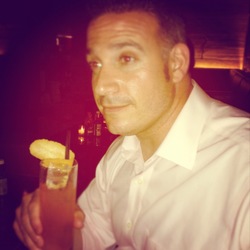

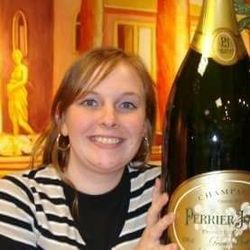
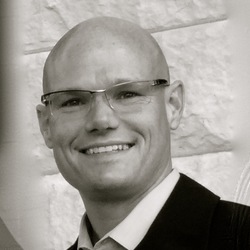




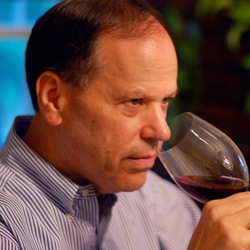


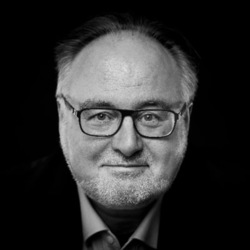

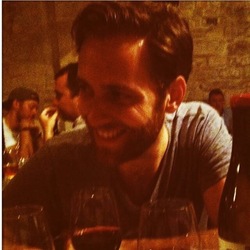


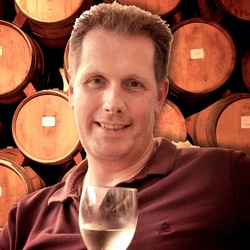



Bob McDonald
The final wine at the Peter Lehmann dinner at the Downs Club and the whole point of the dinner. Delectable: this new cuvée is called the Masterson and is a Barossa Valley Shiraz. Wine Pricing in Australia has become an arms race and this new Cuvée has set the benchmark at $1650 for a magnum - only available in magnum. This was sourced from a vineyard in the Moppa sub district of the Barossa owned by Glen Hammerling from vines planted in 1992 on original rootstocks, dry grown in deep sandy loam with ironstone over clay. The wine itself is an exercise in restraint. Matured in a large 2500 litre fourdre imparting minimal oak influence. You could happily drink this wine now or cellar for over 30 years. It is so well balanced. A brilliant wine but is it worth $1650? I think the pricing is too ambitious but the owner of Peter Lehmann, John Casella, the owner of export star, Yellow Tail, probably doesn’t care as he continues to make money from his budget line. 1458 magnums created and only 1000 released for purchase. — 6 years ago